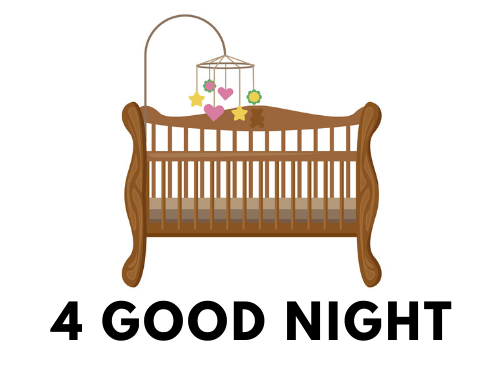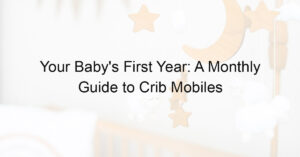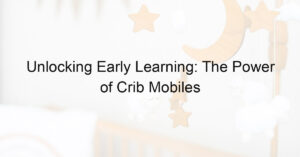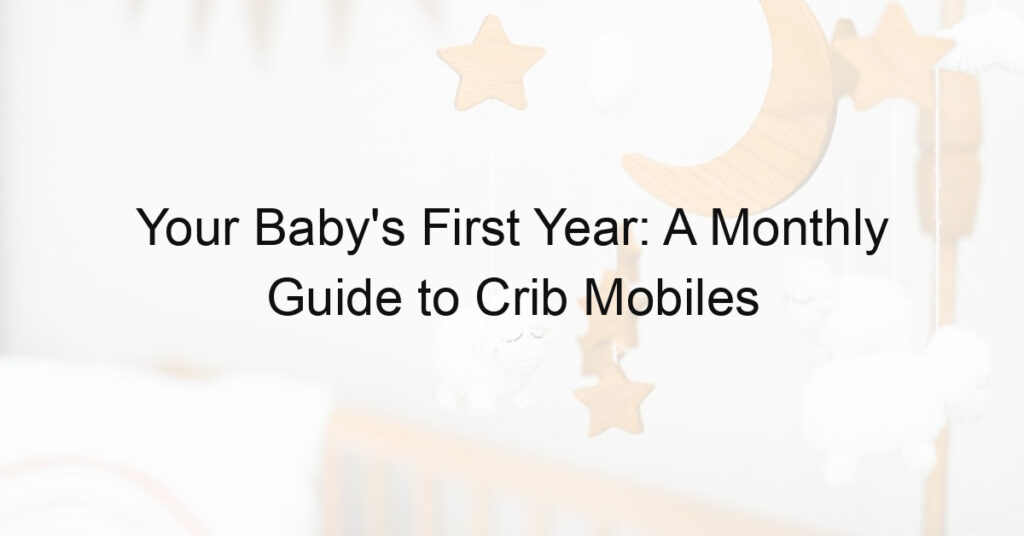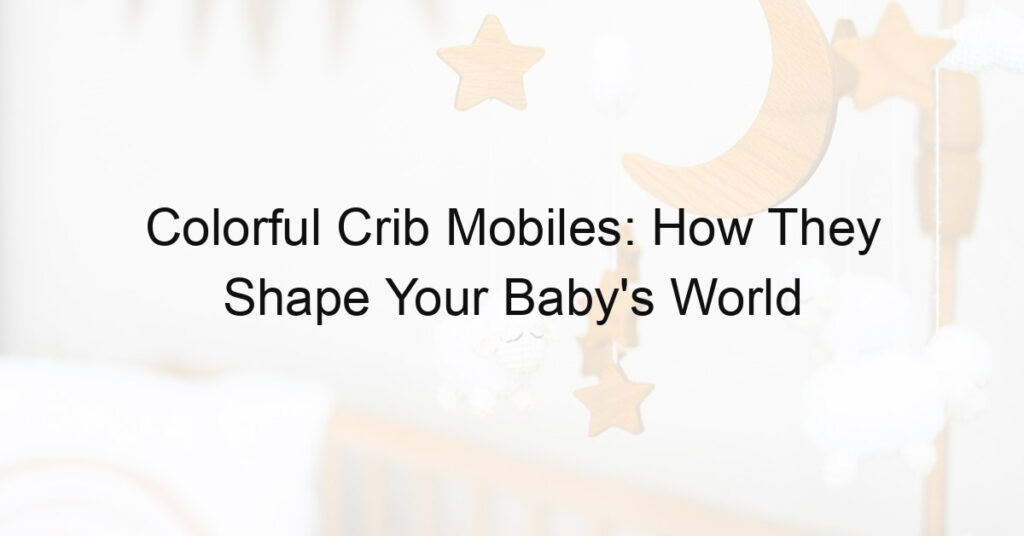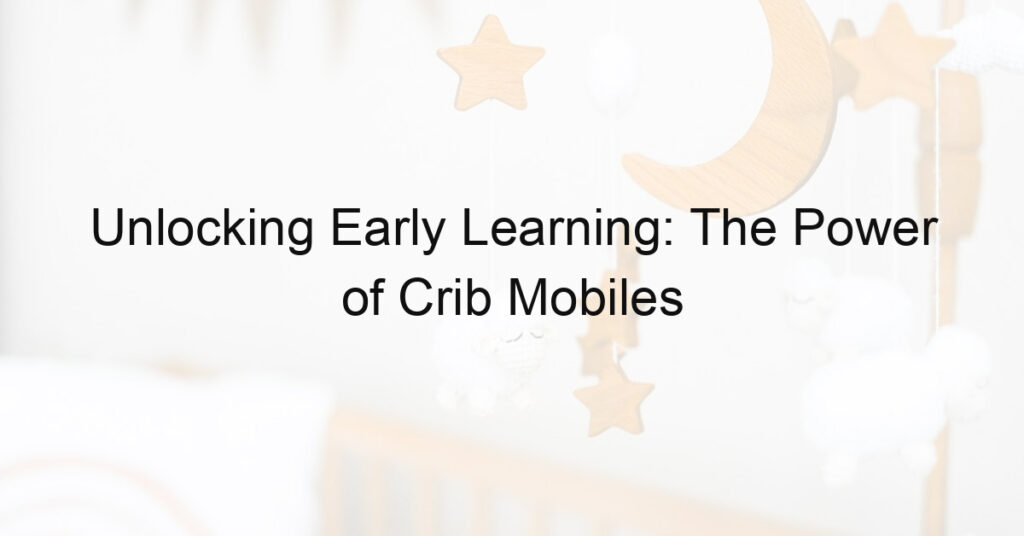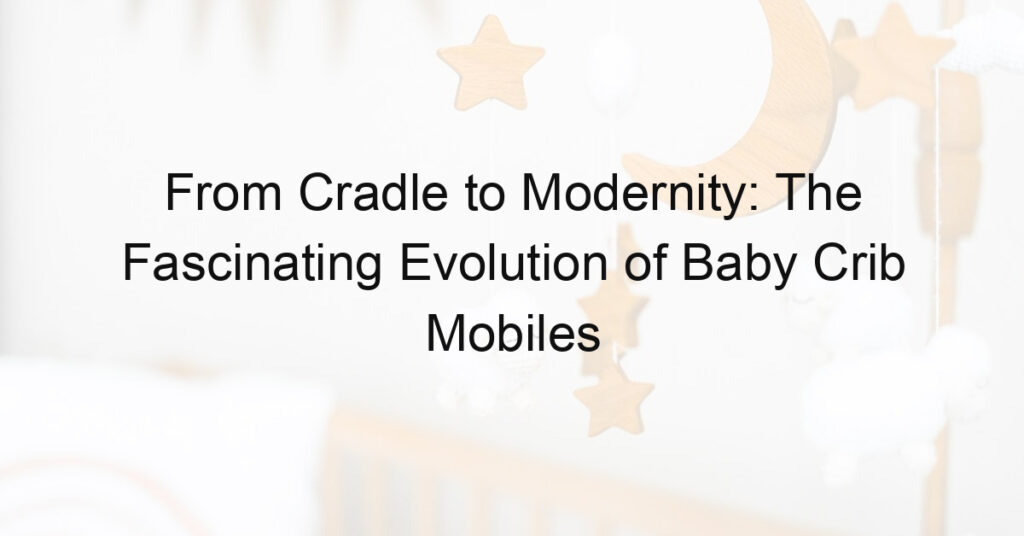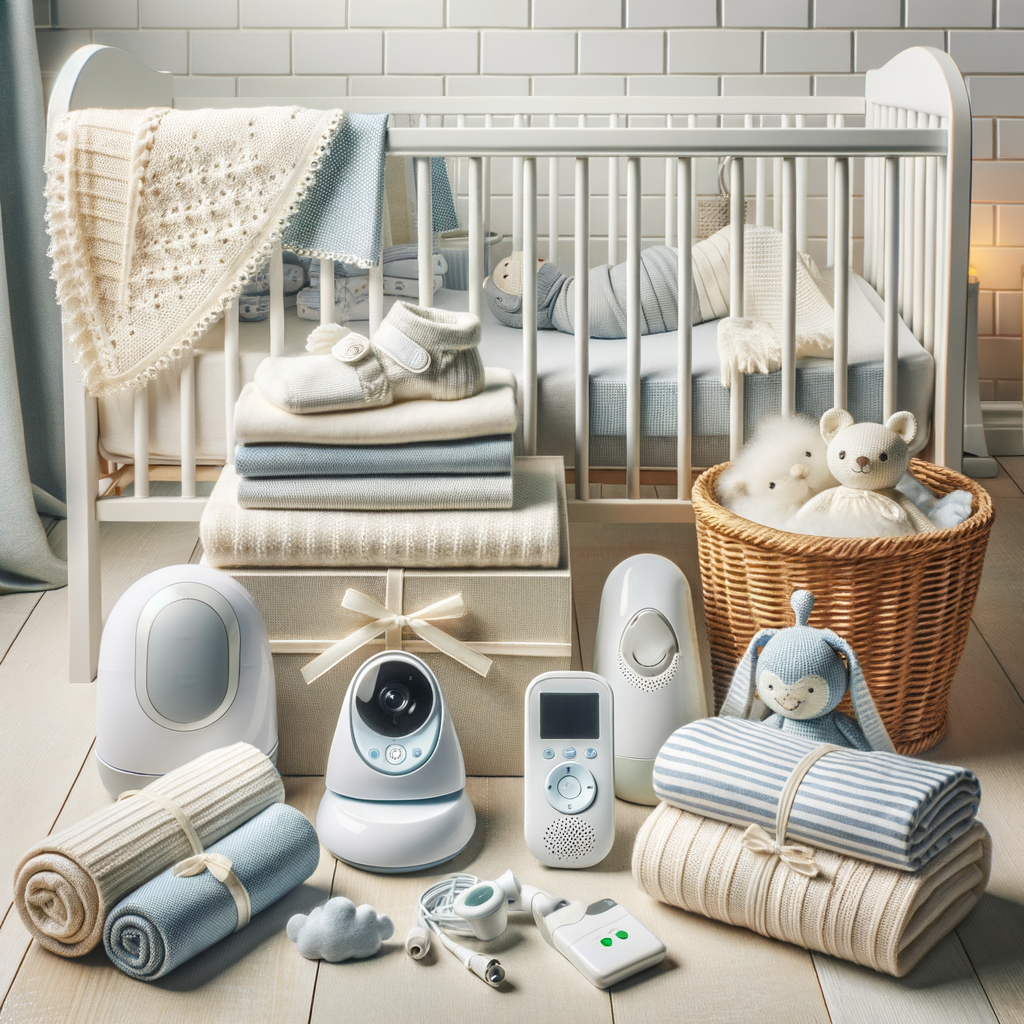
Introduction to the First-Time Moms Guide
Welcome to our comprehensive guide designed specifically for first-time moms. This guide aims to provide you with the essential knowledge and tools needed to navigate the exciting, yet challenging journey of motherhood. Our focus will be on two key areas: understanding the importance of your baby’s sleep and addressing the challenges faced by new moms.
- Understanding the Importance of Baby’s Sleep
As a new mom, you’ll quickly discover that your baby’s sleep is more than just a time for rest. It’s a crucial period for their growth and development. During sleep, babies process the new experiences and information they’ve encountered throughout the day. This helps them learn and develop cognitive skills. Additionally, a good sleep routine can contribute to a happier, healthier baby and a more rested mom.
- Challenges Faced by New Moms
Stepping into motherhood for the first time is a beautiful journey, but it’s not without its challenges. From sleep deprivation to feeding issues, and from postpartum recovery to balancing your new role with other responsibilities, new moms often face a variety of challenges. But don’t worry, you’re not alone. In this guide, we will provide practical tips and solutions to help you navigate these challenges with confidence.
So, whether you’re trying to understand the science behind your baby’s sleep or looking for ways to overcome the common challenges faced by new moms, this guide is here to help. We hope that the information and tips provided will make your journey into motherhood a little easier and a lot more enjoyable.
Baby Sleep Essentials: A Comprehensive Overview
As a new parent, understanding the essentials of baby sleep can be a game-changer. This comprehensive guide will help you navigate through the importance of creating a sleep-friendly environment and understanding your baby’s sleep patterns. Let’s dive in!
- Importance of creating a sleep-friendly environment
Creating a sleep-friendly environment for your baby is crucial. It’s not just about comfort, but also about safety and promoting healthy sleep habits. A quiet, dark, and cool room can help signal to your baby that it’s time to sleep. Using a white noise machine can also help mask disruptive noises. Remember, a good sleep environment is free from hazards. This means no loose blankets, pillows, or stuffed animals that could pose a risk.
Research shows that babies who sleep in a well-prepared environment tend to sleep longer and wake up less often. This is not only beneficial for your baby’s growth and development, but it also means more sleep for you!
- Understanding your baby’s sleep patterns
Just like adults, babies have their own sleep patterns. However, these patterns can be quite different from ours. Newborns sleep a lot, typically between 16 and 17 hours a day. But, they don’t sleep for long stretches. Instead, they wake up often, regardless of whether it’s day or night.
As your baby grows, their sleep patterns will change. By three to six months, many babies have a regular sleep and wake cycle. By the time they’re a year old, most babies are sleeping more at night. Understanding these patterns can help you create a sleep schedule that works for your baby and the rest of the family.
Remember, every baby is unique. What works for one might not work for another. The key is to be patient, flexible, and responsive to your baby’s needs.
In conclusion, understanding the essentials of baby sleep and creating a sleep-friendly environment can make a world of difference in your baby’s sleep quality and your own peace of mind. Happy parenting!
Newborn Sleep Toolkit: Essential Items for New Moms
As a new mom, ensuring your newborn gets a good night’s sleep is crucial for their growth and development. This section will guide you through some essential items to include in your newborn sleep toolkit. These items not only provide comfort to your baby but also ensure they sleep safely and soundly.
- Baby cribs and bassinets
- Baby monitors
- Swaddling blankets
- Pacifiers
A baby crib or bassinet is the first item on our list. It provides a safe and comfortable space for your baby to sleep. Cribs are larger and can be used until your child is two years old. Bassinets, on the other hand, are smaller and ideal for newborns up to four months old. They are portable and can be placed right next to your bed for easy nighttime feedings and diaper changes.
A baby monitor is a must-have for new moms. It allows you to keep an eye (and ear) on your baby while they sleep, even when you’re in another room. Some monitors come with video capabilities, while others only provide audio. Choose one that suits your needs and gives you peace of mind.
Swaddling blankets are another essential item for your newborn sleep toolkit. Swaddling mimics the snugness of the womb, helping your baby feel secure and promoting better sleep. Make sure to choose a soft, breathable material to keep your baby comfortable.
Last but not least, consider including a pacifier in your toolkit. Pacifiers can help soothe your baby and make them fall asleep faster. However, it’s important to note that not all babies like pacifiers, and they should not be introduced until breastfeeding is well established.
In conclusion, these are just a few of the essential items that can help ensure your newborn gets a good night’s sleep. Remember, every baby is unique, so what works for one might not work for another. It’s all about finding what works best for you and your little one.
Baby Sleep Tools: A Detailed Guide
When it comes to ensuring a good night’s sleep for your baby, there are several tools that can come in handy. One of these is the baby monitor. Let’s delve into understanding its use.
Understanding the Use of Baby Monitors
Baby monitors are a must-have tool for new parents. They allow you to keep an eye and ear on your baby, even when you’re not in the same room. This can provide peace of mind, especially during those early months when your baby’s sleep patterns can be unpredictable.
- Types of baby monitors
- Choosing the right monitor for your baby
There are three main types of baby monitors: audio monitors, video monitors, and movement monitors. Audio monitors allow you to hear your baby, while video monitors let you see and hear your baby. Movement monitors, on the other hand, alert you if your baby hasn’t moved for a certain period.
When choosing a baby monitor, consider your specific needs and circumstances. If you live in a small space, an audio monitor might be sufficient. However, if you’re often in a separate part of the house, a video monitor could provide more reassurance. For parents of babies with health concerns, a movement monitor can offer extra peace of mind.
Remember, the best baby monitor is the one that fits your family’s needs and provides you with peace of mind. So, take your time to research and choose the right one.
Importance of Swaddling Blankets
Swaddling blankets are an essential tool in a new mom’s toolkit. They provide comfort and security to your newborn, mimicking the warm and snug environment of the womb. Let’s delve into the benefits of swaddling and learn how to do it safely.
- Benefits of Swaddling
Swaddling has been practiced for centuries and is known for its numerous benefits. Here are some key insights:
| Benefit | Description |
|---|---|
| Improved Sleep | Swaddling helps babies sleep longer and more peacefully by preventing the startle reflex that can wake them up. |
| Comfort and Security | Swaddling mimics the womb’s environment, providing a sense of security and comfort to your baby. |
| Reduced Crying | Studies show that swaddled babies tend to cry less as the snug wrap soothes and calms them. |
- How to Swaddle Your Baby Safely
While swaddling has its benefits, it’s crucial to do it correctly and safely. Here are some tips:
- Use the Right Blanket: Choose a lightweight, breathable fabric to prevent overheating.
- Check the Tightness: The swaddle should be snug but not too tight. You should be able to slide your hand between the blanket and your baby’s chest.
- Position Correctly: Always place your baby on their back to sleep. This is the safest position and reduces the risk of SIDS (Sudden Infant Death Syndrome).
- Monitor Regularly: Regularly check your baby to ensure they are comfortable and not overheating.
Swaddling is a time-tested practice that can help your baby sleep better, feel secure, and cry less. However, it’s essential to swaddle safely and monitor your baby regularly. With these tips, you can make the most of this useful tool in your newborn sleep toolkit.
First-Time Parenting Tips: Ensuring a Good Night’s Sleep for Your Baby
As a first-time parent, one of the most crucial tasks is ensuring your baby gets a good night’s sleep. This is not only important for the baby’s health and development, but it also gives you a much-needed break. Here are some tips to help you navigate this new terrain.
- Establishing a Bedtime Routine
- Understanding the Signs of Sleep Readiness
- Handling Night-Time Awakenings
Establishing a consistent bedtime routine can help signal to your baby that it’s time to sleep. This routine could include activities like a warm bath, a bedtime story, and a lullaby. According to a study, babies who follow a nightly routine sleep better than those who don’t. Remember, consistency is key.
Every baby is different, and they will show different signs when they are ready to sleep. Some common signs include rubbing eyes, yawning, and fussiness. By understanding these signs, you can put your baby to bed when they are naturally ready to sleep, making the process easier for both of you.
It’s normal for babies to wake up during the night. When this happens, try to keep the room dark and quiet. Avoid stimulating activities and keep interactions to a minimum. This can help your baby understand that night-time is for sleeping.
Remember, every baby is unique and what works for one might not work for another. It’s all about understanding your baby’s needs and responding accordingly. With patience and consistency, you’ll soon find a routine that works for both of you.
| Bedtime Routine Activity | Benefit |
|---|---|
| Warm Bath | Helps to relax and soothe the baby |
| Bedtime Story | Improves language skills and helps baby wind down |
| Lullaby | Can calm a fussy baby and signal it’s time to sleep |
By following these tips, you can ensure a good night’s sleep for your baby, which is vital for their growth and development. Remember, it’s a learning process for both you and your baby, so don’t be too hard on yourself if things don’t go perfectly right away.
Baby Sleep Aids: A Closer Look
When it comes to helping your baby sleep, there are many tools and aids available. One of the most popular and effective is the white noise machine. Let’s take a closer look at this essential sleep aid.
White Noise Machines
A white noise machine is a device that produces a sound similar to a waterfall or wind blowing through trees. It’s often used in the background to drown out other noises and help your baby sleep better. Here are some key points to consider:
- Benefits of White Noise Machines
- Choosing the Right White Noise Machine
White noise machines can be a game-changer for both parents and babies. They create a soothing environment that mimics the sounds your baby heard in the womb, which can help them feel safe and calm. This can lead to longer, more restful sleep for your baby and more sleep for you too!
When selecting a white noise machine, consider factors like volume control, portability, and power source. Some machines also offer a variety of sounds, such as lullabies or nature sounds, which can be a nice feature. Remember, the best machine is the one that works best for your baby’s specific needs and your lifestyle.
In conclusion, a white noise machine can be a valuable tool in your baby sleep toolkit. It can provide a soothing environment for your baby and help them (and you!) get a good night’s sleep.
Night Lights
When it comes to ensuring a good night’s sleep for your baby, night lights play a crucial role. They provide a gentle glow that can comfort your little one and make nighttime feedings and diaper changes easier for you. Let’s explore the benefits of night lights and how to choose the right one for your baby’s room.
- Benefits of Night Lights
- Comfort for Your Baby: A night light can help soothe your baby, making them feel safe and secure when it’s time to sleep.
- Ease for Parents: It provides enough light for you to see without disturbing your baby’s sleep, making nighttime tasks easier.
- Sleep Routine: A night light can signal to your baby that it’s bedtime, helping establish a sleep routine.
- Choosing the Right Night Light
- Light Intensity: Look for a night light that provides a soft glow. It should be bright enough for you to see, but not so bright that it disturbs your baby’s sleep.
- Safety: Choose a night light that is safe for your baby’s room. It should not get too hot, and it should be out of your baby’s reach.
- Extra Features: Some night lights come with extra features like timers or sound machines. Consider whether these features would be beneficial for you and your baby.
Night lights offer several benefits for both parents and babies. Here are a few key advantages:
With so many night lights available, choosing the right one can be a bit overwhelming. Here are some tips to help you make the right choice:
In conclusion, a night light can be a valuable tool in your baby sleep toolkit. It provides comfort for your baby and convenience for you, making those nighttime tasks a little bit easier. Remember to consider light intensity, safety, and any extra features when choosing the right night light for your baby’s room.
Essential Baby Sleep Items: A Checklist for New Moms
As a new mom, making sure your baby gets a good night’s sleep is crucial. Not only does it help your baby grow and develop, but it also gives you some much-needed rest. To help you create the perfect sleep environment for your baby, we’ve compiled a checklist of essential baby sleep items.
- Baby crib or bassinet: The first item on our checklist is a baby crib or bassinet. This is where your baby will spend most of their sleep time. When choosing a crib or bassinet, make sure it meets all safety standards. It should have a firm mattress and no loose or missing parts.
- Baby monitor: A baby monitor allows you to keep an eye (or ear) on your baby while they sleep. This is especially useful if your baby’s room is not close to yours. There are various types of baby monitors available, including audio, video, and movement monitors.
- Swaddling blanket: Swaddling can help your baby feel secure and comfortable, which can lead to better sleep. A swaddling blanket is designed to make swaddling easy and safe. Remember, always place your swaddled baby on their back to sleep.
- Pacifier: Some babies find comfort and fall asleep easier with a pacifier. However, it’s important to note that not all babies like pacifiers, and they should not be introduced until breastfeeding is well established.
- White noise machine: A white noise machine can help soothe your baby to sleep by blocking out other noises. This can be particularly useful if you live in a noisy environment. The sound should be soft and consistent, like the sound of a fan or rain.
- Night light: A soft night light can provide just enough light for you to check on your baby without waking them. Choose a night light with a soft, warm glow rather than a bright, white light.
Remember, every baby is unique and what works for one might not work for another. It might take some trial and error to find what works best for your baby. However, this checklist provides a good starting point for creating a sleep-friendly environment for your little one.
Toolkit for New Mothers: Case Studies
As a new mother, you may be wondering how to ensure a good night’s sleep for your baby. We’ve compiled two case studies to provide you with practical insights and strategies. These case studies focus on the impact of a good sleep environment and the role of baby sleep aids.
- Case study 1: The impact of a good sleep environment
Meet Lisa, a first-time mom to a beautiful baby girl named Emma. Lisa was initially having trouble getting Emma to sleep through the night. She realized that Emma’s sleep environment might be the issue. Lisa decided to make some changes to Emma’s room to create a more sleep-friendly environment.
She started by ensuring the room was dark enough. She installed blackout curtains to block out any external light. Lisa also made sure the room was at a comfortable temperature, neither too hot nor too cold. She also added a white noise machine to mask any disruptive noises.
The result? Emma started sleeping better and longer. Lisa’s experience shows how a good sleep environment can significantly impact a baby’s sleep quality.
- Case study 2: The role of baby sleep aids
Next, let’s look at Sarah, a new mom to twins. Sarah was struggling to get her twins to sleep at the same time. She decided to try baby sleep aids after reading about their benefits.
Sarah introduced a soft, cuddly sleep toy for each of her twins. These toys were designed to mimic the comforting presence of a mother, helping the babies feel safe and secure. Sarah also started using a baby sleep app that played lullabies and soothing sounds.
The result was remarkable. The twins started to sleep more peacefully and at the same time. This case study demonstrates the potential benefits of using baby sleep aids.
These case studies highlight the importance of creating a good sleep environment and considering the use of baby sleep aids. As a new mother, you can use these insights to help your baby get a good night’s sleep.
Baby Sleep Solutions for First-Time Moms: Key Takeaways
As we wrap up our comprehensive guide on baby sleep solutions, let’s recap the most important points that every first-time mom should remember.
- Importance of Understanding Baby’s Sleep Patterns
- Essential Items for a Baby’s Sleep Toolkit
- Effective Use of Baby Sleep Aids
- Importance of a Bedtime Routine
Understanding your baby’s sleep patterns is crucial. Babies have different sleep cycles compared to adults. They spend more time in rapid eye movement (REM) sleep, which is a lighter sleep stage. This is why they wake up more often. Recognizing these patterns can help you anticipate your baby’s needs and create a more effective sleep schedule.
Your baby’s sleep toolkit should include items like a comfortable crib, a baby monitor, and a white noise machine. A good swaddle or sleep sack can also be beneficial. These items can provide a safe and soothing environment that promotes better sleep for your baby.
There are various sleep aids available that can help your baby sleep better. These include pacifiers, white noise machines, and baby swings. However, it’s important to use these aids effectively. For instance, a white noise machine should be used at a safe volume and placed at a safe distance from the baby. Always consult with a pediatrician before introducing a new sleep aid.
Establishing a consistent bedtime routine can signal to your baby that it’s time to sleep. This routine could include activities like a bath, a bedtime story, and a lullaby. A routine can provide a sense of security and help your baby fall asleep more easily.
In conclusion, understanding your baby’s sleep patterns, having a well-stocked sleep toolkit, using sleep aids effectively, and establishing a consistent bedtime routine are all key to helping your baby sleep better. Remember, every baby is unique, and what works for one might not work for another. It’s all about finding what works best for your baby and you.
